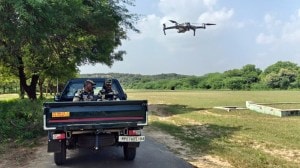New slot pool to reduce air traffic, airport congestion
Facing an unprecedented rise in air traffic and related congestion at airports, the Civil Aviation Ministry has been forced to create a ...

Facing an unprecedented rise in air traffic and related congestion at airports, the Civil Aviation Ministry has been forced to create a ‘‘slot pool’’ for new airlines entering the sector.
Now, airport operators—mainly the Airports Authority of India (AAI) and private entities in case of greenfield facilities like Bangalore and Hyderabad—will co-ordinate slot allocation in India.
Air India, which was essentially the interface with the International Air Transporters’ Association (IATA) on determining slots for international carriers operating into India, has been removed from the process.
The new system, guidelines for which are being drawn up, caters for a single-window clearance system handled by airport operators. On receipt of an application, operators will have to get back to the airline in three days.
Until now, all slot requests used to be received by Air India, which sent ‘‘graphical representations’’ to the AAI. Once the AAI had studied the reqests, it would make its own chart that would be placed before a slot approval committee, including members from the Directorate General of Civil Aviation, Bureau of Civil Aviation Security, Immigration and Customs.
And even then, only 75 per cent of the slots were distributed while the rest were to be finalised by Air India in the IATA Scheduling Conference. Here, AI would co-ordinate slots for itself at international destinations while finalising slots of international carriers in India. It would also send a ground-handling representative to screen slots for other carriers.
But this was objected to because AI did ground-handling only for 26 of the 59 airlines that operated to India last year. The entire process was found to be time-consuming and often said to have been biased.
Unlike abroad, where there are constraints of runway occupancy time and ‘‘night curfew’’—like in Europe—during which jet flights cannot land, India faces constraints because its international terminals cannot handle over 1,000 passengers in peak hours. Even Delhi and Mumbai barely cross this mark with the latter being able to manage 1,200 passengers.
This is a far cry from airports like Seoul which handles over 3,700 passengers in arrival and close to 2,900 passengers in departure. Bangkok handles over 3,500 passengers in peak hours while Narita Airport, Tokyo, can take in about 6,600 passengers.
What this new slot pool is all about
• Historical rights will be honoured. Airlines with a record of using a particular slot 80% of the time will be given preference
• Air services agreements not to be guided by ground-handling constraints
• 50% slots available after distribution based on historical rights will be placed in a slot pool and reserved for new entrants
• Streamlining of terminal management so that departing passenger s are ready to board by the time the plane arrives
• Simultaneous efforts to finish check-in, immigration, security, customs and other procedures in 60 minutes for departing passengers and 45 minutes for arrival
Photos





- 01
- 02
- 03
- 04
- 05


























